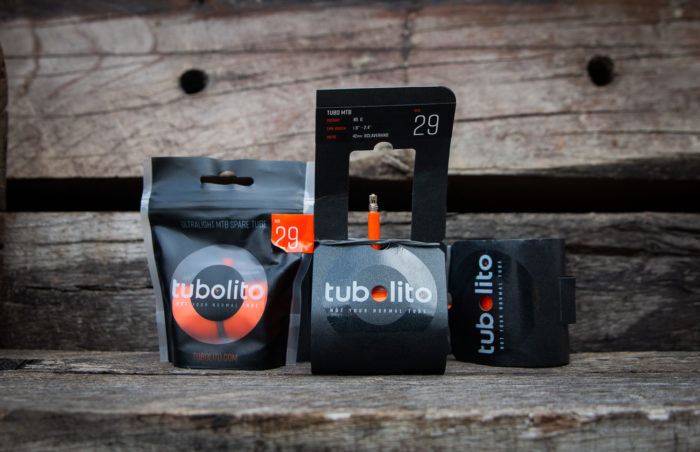If you’re a bit of a weight weenie, and chances are you are, then you will probably have heard of Tubolito Tubes. The bright orange inner tubes are pretty special as far as inner tubes go for a variety of reasons.
- They’re light – 85g for a standard 29″ tube.
- Tubolito claim they are twice as strong as a regular butyl tube.
- They are really expensive. Like, about $USD35
I can hear exactly what you’re thinking – “Tubes? But why?”
That’s why my curiosity came in to test some – I can’t really see a reason to not run my wheels tubeless, but then I always have to carry tubes anyway in a race. Unless you’re racing pure XCO, failing to carry the right equipment to fix a flat means you might just fail to finish. A light and compact tube is worth looking into.
Tubolito have had the tubes manufactured in Europe, and the material is a thermoplastic elastomer. It’s actually constructed in a tube, and has just one small weld near the valve, about 4cm past it.
One small weld helps for durability and reliability.
The material is said to be highly elastic, although by touch it feels far more firm than butyl and very much like plastic. And at the same time, it feels stronger. It is hard to ignore the low weight when holding the tube too, and the small pack size. The lightest butyl tubes I have on hand are about 150g. Some others are 185-190g, and most are 230g or more. So 85g is really light – and Tubolite make a ‘spare’ which is just 45g, and smaller again.
When you start to think of mandatory gear for stage races, or just carrying the right spares – this space and weight saving makes sense. If you could save about 200g by carrying two regular Tubolito tubes instead of two standard butyl tubes, for about $USD70 – that would be one of the most cost effective weight savings on your bike. You might even make it 300g if you opted for the 45g spare tubes.
But Tubolito don’t make their tubes to be used as back up tubes – they’re designed to be used! So it was time to fit a pair up.
I have a new set of wheels built up, on some super light EiE Carbon rims, 28-hole DT Swiss 350 hubs tuned with a 240 freehub body and ceramic bearings, plus with DT Revolutions and Prolock nipples. They’re about 1290g, and have a 25mm internal width. I’m keen to play with a few new tyre options like the Maxxis Aspen and Rekon Race, so fitting the Tubolito tubes is far easier on the road than messing with sealant and looking for a track pump.
Setting them up is like any other tube. Have one bead in the rim, inflate the tube so it holds its shape, place the other bead in carefully, check there is no pinching and then inflate. The valve stem is smooth, and has a rubber O-ring. This is actually placed on the outside as a retainer, keeping it stable.
With the tube in the tyre, it is noticebaly firm with just enough air to hold it’s shape, but already it about 15psi it was filling the space. Now they’re set up – they don’t seem any different to another tube.
But how different will it be to tubeless?
I don’t tend to run pressures so low that I can burp a tyre or impact the rim. It’s not conducive to riding and racing. So the next step is to get some trail time on the tubes, for quite a while, and see how they hold up.

